Our journey to Amboseli began with a warm welcome at the Amboseli Glass House, surrounded by the vast savannah. Samuel, the caretaker of the house, had welcomed us with big smile on his face. He took the time to show us around and tell us about all the facilities in the house. He also assured us that we could call on him for anything we needed. It’s amazing how such kindness can make you feel welcome in a new place. This type of hospitality is very natural in African culture, where they considered guests as a blessing.
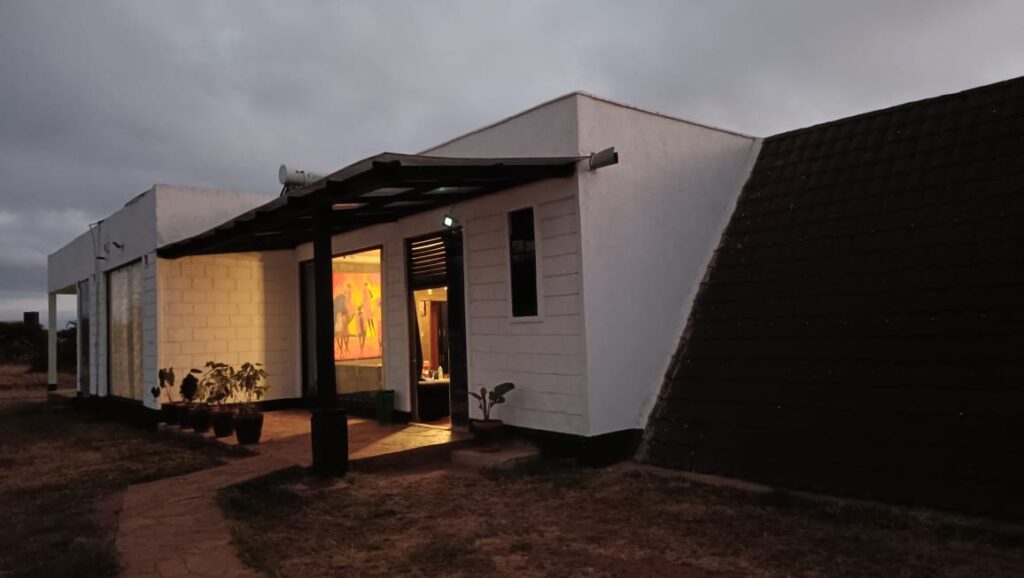
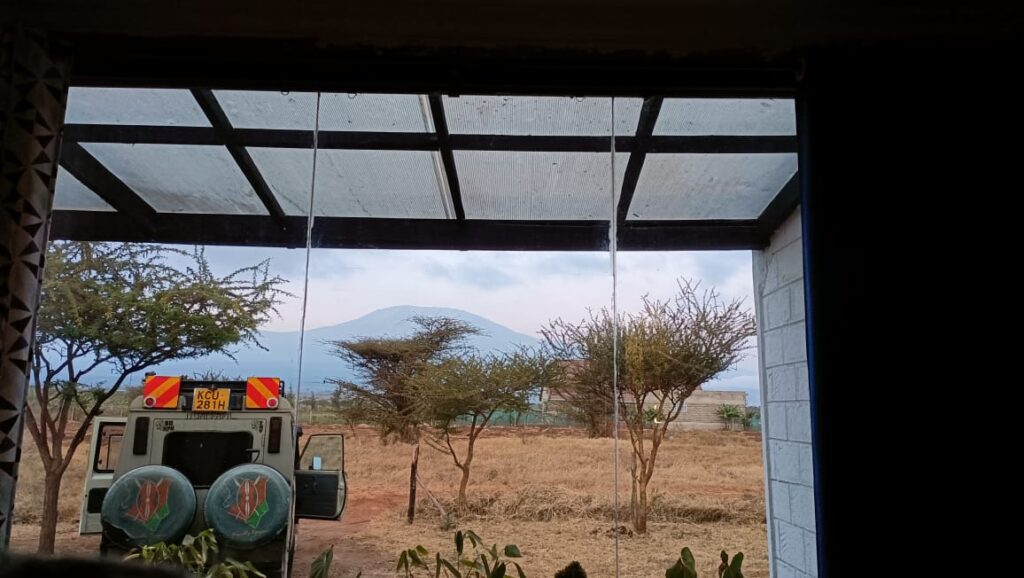
The Amboseli Glass house was not just a place to stay; it was a beautiful experience. Nestled in Amboseli National Park, this uniquely designed house features spacious ensuite 3 bedrooms with 10 feet French style high glass windows offering breathtaking views of Mount Kilimanjaro. The house included a fully equipped kitchen, a cozy seating area, and an outdoor fireplace, making it a perfect blend of comfort and being in nature. The serene environment quickly washed away the fatigue of our long journey. Rested and rejuvenated, we embarked on our expedition to the nearby Masai village.
When we think of the Maasai, an image of tall, dark, regal warriors springs to our mind. This semi-nomadic tribe of East Africa is known for its rich traditions, colourful attire, and unique customs. The term “Masai” itself means “those who speak in a certain way” in their native language, “Maa”. They have fascinating history filled with adventure and bravery. Many authors and storytellers around the world have been inspired by their way of life.
As soon as we got out of the car ‘Masari’, the village chief came forward to greet us with warm smile. He requested the entrance fee which includes the village tour with welcome dance. It was an amazing start to our visit.
Masari introduced us to his people. We were allowed to take photos and videos and ask as many questions as we liked. The village was small with just about 150 residents. All the men were dressed in their traditional “Shukas” (colorful cloths). The bright red, blue, and purple of their attire stood out against the earthy tones of the landscape, creating a striking visual contrast. The women were cladded in their “Kangas” or “Lesos”—long, colorful dresses along with beaded necklaces, bracelets, and headbands. Both men and women wore metal hoops on their stretched earlobes. Their unique look reflects their rich identity and fascinating culture.
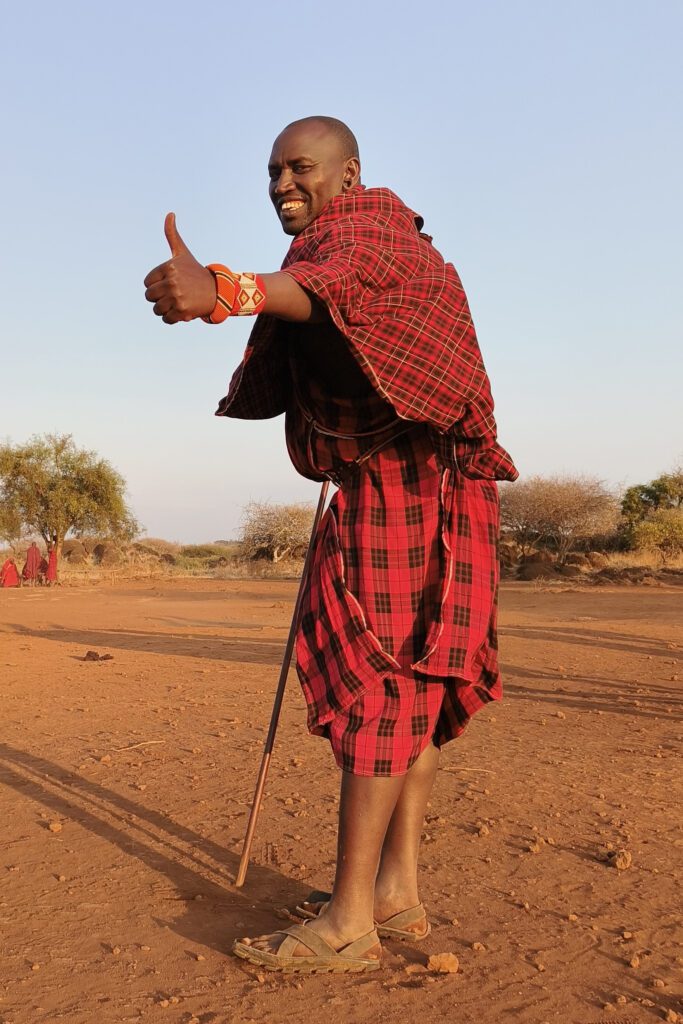
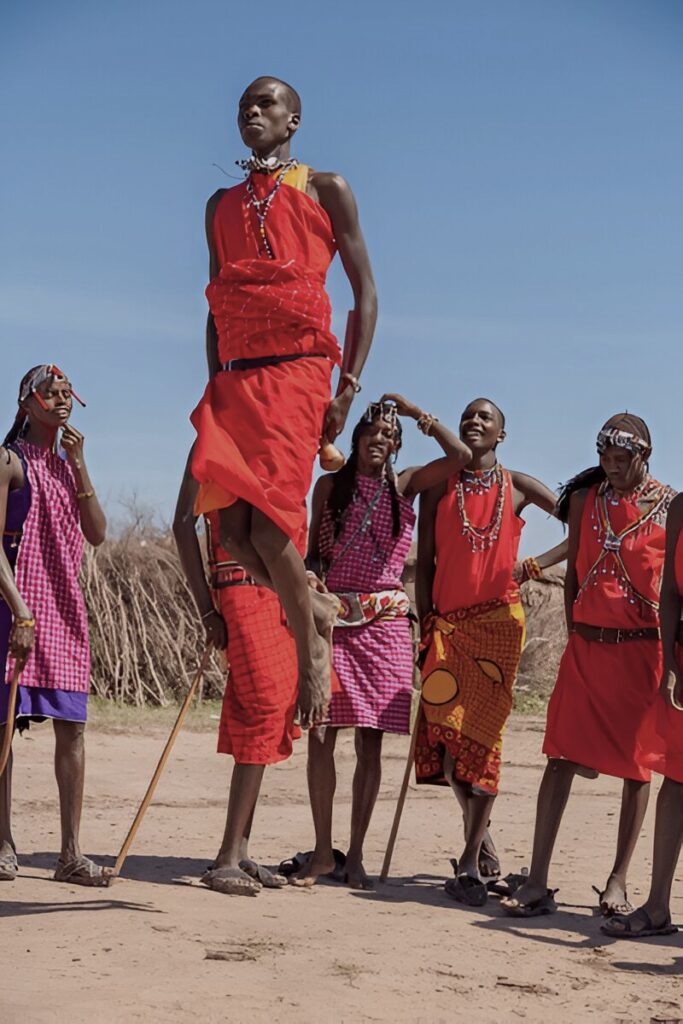
One of the highlights of our visit was witnessing the traditional Masai dance. It was one of my favorite moments watching the Masai men and women forming a circle and beginning the “Adumu” or jumping dance. The atmosphere buzzed with the excitement as each man took turns leaping high into the air, showcasing their incredible strength and agility. Their humming rhythmic chants and the sound of their feet hitting the ground created an electrifying atmosphere. What made it more special was when we were invited to join the group during the dance. It was a moment of pure joy and connection, bridging the gap between cultures through the universal language of dance.

Masari also shared insights into their daily routines, which revolve around taking care of livestock, crafting beautiful beadwork, and maintaining their homes. Their traditional round houses called “Enkaji” were made from mud, sticks and grass to protect from wild animals at night. It was fascinating to see how they use materials from their surroundings to create sturdy shelters. Cattle hold a central place in Maasai culture. Ancient Maasai stories said that the first God “Enkai”, began the cycle of life with his love and his three sons. The youngest son, known as Maasai, was gifted with cattle. These cattle were not just animal; they were a symbol of wealth and prosperity.
The Maasai also have a strong sense of community. They gather for meals, storytelling, and sharing news. Their connection to the land and each other is at the heart of their culture.
Most of the Maasai speak the Maa language. Although many of them can speak Kenya’s national language Swahili and English, especially those living in more urbanized areas. Their soft-spoken nature and kindness made us feel welcome and at ease in the foreign land.
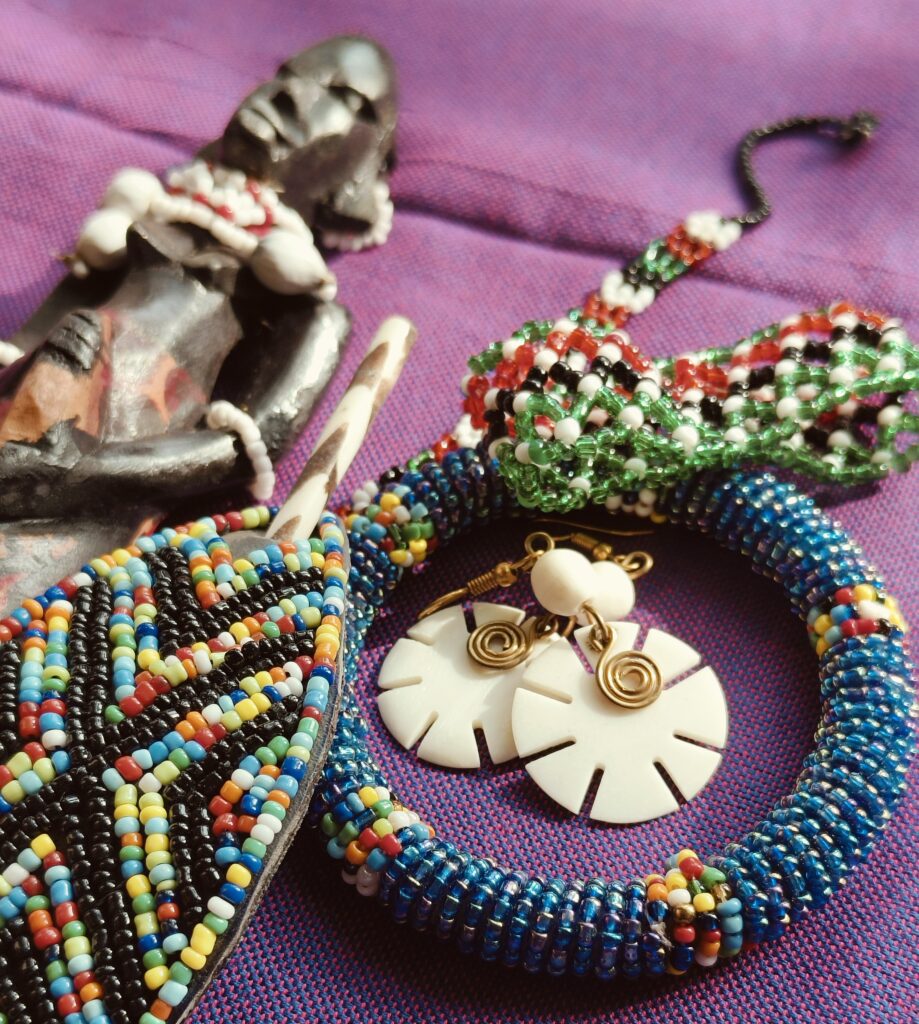
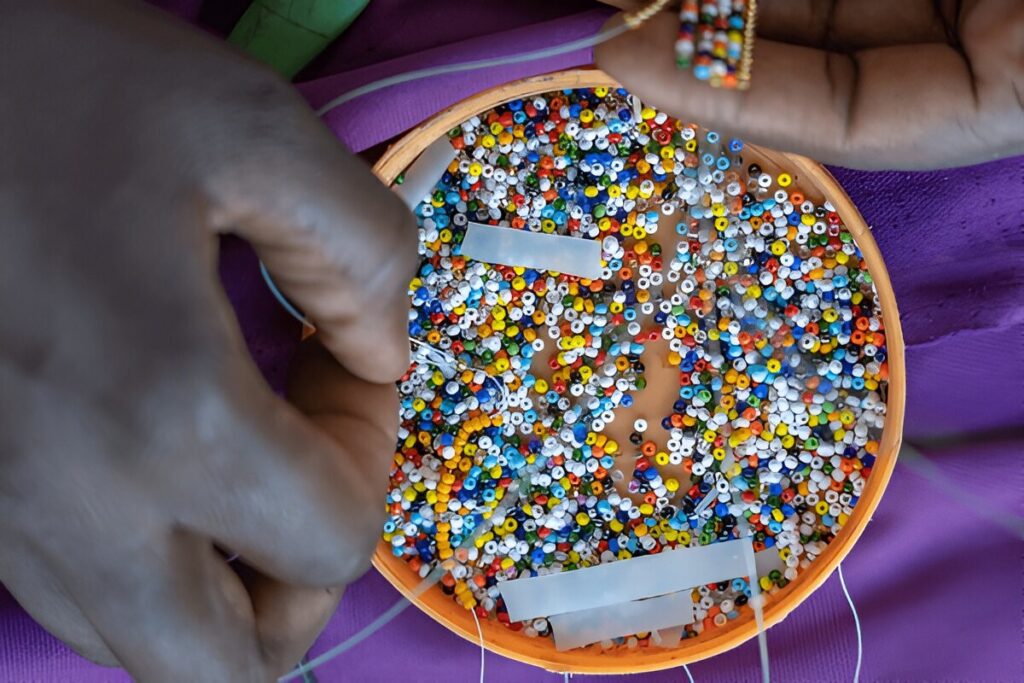
At the end of the visit, there is a quick walk in their souvenir market where the village ladies sell their items of jewellery or other bits and pieces. You are not forced to buy anything, but they may put some pressure on you. The style of bargaining is very interesting.
As we left the village, we carried with us not just memories, but a deeper appreciation for the rich tapestry of human culture. The Masai people’s resilience, warmth, and connection to their land left a lasting impression on us.
I would highly recommend you visit a Masai village during your stay at Kenya. Visiting a Masai village is indeed a profound experience that highlights the beauty of cultural diversity and the importance of preserving traditions. For the younger people, such visits can be incredibly educational and inspiring. They can learn to respect nature, appreciate the simplicity of life, and understand that happiness comes from togetherness and community rather than material possessions.
Stay tuned for more updates as our journey continues through this incredible wilderness of Kenya!
Few Important Information
- Entry fee for the Maasai village may vary between $ 20-40 per person.
- Dress modestly, learn some basic greetings, and follow local customs and traditions. Avoid disruptive behaviour and be mindful of the community’s way of life.
- Ask for permission before taking photos and videos.
- Please don’t tip in cash when you visit the Masai Village instead you can buy some traditional Maasai crafts like beadwork, jewellery, wooden carvings, and textiles as souvenir to support the local economy or can also give them some foodstuff like Maize Meal, grains, bread, bottled juice etc. The locals will highly appreciate this.
- If the village has a school, you can visit the classroom and see the kids perform songs and chants. You can also donate books, crayons, and pens to the school. But remember to let the village chief know about these items beforehand.
If you have any questions, please don’t hesitate to contact us.

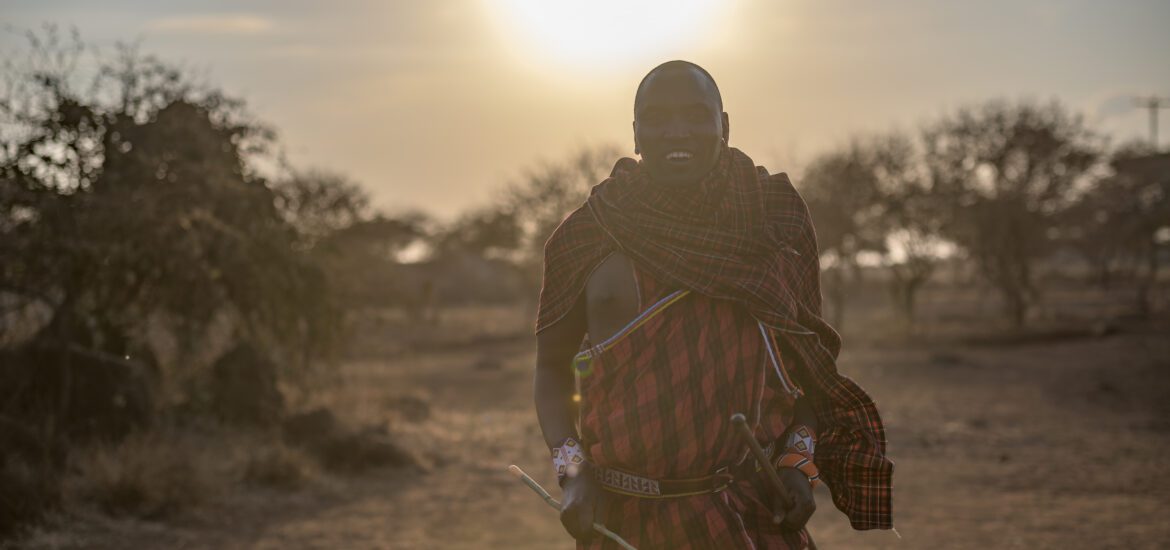
Excellent!
Very good idea, this types of blog helps us a lot of things about that particular area.
Excellent writing and thanks for providing important information on Masaai village, their traditions, etc. Keep on writing. Expecting more such articles in your blog.